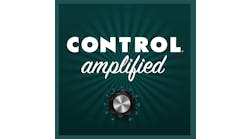Technology writer Marla Keene works for AXControl.com. She can be reached at [email protected].
Someone in our industrial park drives a gorgeous blue Tesla Model 3. This guy parks outside my window every day. I dream of buying the car from him, but I know he’s not in the market to sell when Teslas—especially in that color—are hard to find new. So, then I waffle over whether I should spend my money on a new blue Tesla of my own, or go old-school and find a replica of the red ‘71 Mustang I drove in high school.
Sourcing automation components for process control can lead to a similar debate. New or used? The reliability of replacement parts is a key concern. But so is cost. And a predictable supply chain is necessary to limit downtime. What other factors should you be considering?
Planned, technical and eco-obsolescence
The choice of whether to buy new or used may primarily be determined by the age of your system. Planned obsolescence takes away the option of ordering directly from the manufacturer, and older legacy systems may no longer have remaining unused surplus stock available for purchase, although this is an option for systems only recently removed from the manufacturer’s catalog. There is also the option of new parts made by third-party manufacturers; however, these parts may vary from OEM components in their fit or function in some small but critical way that will not be apparent until they’ve been ordered and installed, and then fail on your system. OEM parts, on the other hand, are designed to swap out perfectly with no concerns about compatibility.
The primary worry many have with older refurbished parts may be: Will my replacement be any better than the damaged part I’m replacing? It’s a consideration. Heat can significantly impact capacitors and other electrical components. Wear is also an issue. And while some components can be incredibly robust—TE Connectivity notes that while general-purpose and power relays are usually rated for 100,000 operations, their actual life expectancy can be as much as 100 million—it’s important to buy these parts from a reputable dealer with staff on-site who can recognize any issues as they inspect components, and have the skills to thoroughly refurbish and test obsolete parts before they are resold. Parts should also be warranteed. The company I work for, as an example, offers a two-year warranty on our refurbished drives. A good relationship with a quality reseller can also strengthen your supply chain and give you access to external support for your equipment after this is no longer available through the manufacturer.
Parts often become technically obsolete long before they are functionally so. Manufacturers continually add new product lines with newer technologies included (built-in connectivity vs. fieldbus networks, for example) to create that “itch” to upgrade. An upgrade to your equipment may lead to faster, higher production or less waste. But this comes at a cost, and more than just that of the new equipment. Downtime during the changeover, loss of productivity during training, and the cost to retrain your staff must also be factored in.
Many manufacturers are now considering how to “green up” their manufacturing. Sustainability, energy efficiency, and greenhouse gas control have become a part of many manufacturers’ long-term planning. Supporting legacy systems with refurbished parts, otherwise known as eco-obsolete technology, can be part of this initiative, as it puts to use functional and still-efficient parts that would otherwise be relegated to end-of-life recycling or the landfill. These parts often contain mercury, cadmium, lead, hexavalent chromium and flame retardants like polybrominated diphenyl ethers (PBDEs) or polybrominated biphenyls (PBBs.) Making use of their functionality not only saves money compared to new parts and extends the life of your system, it also keeps these dangerous substances from becoming part of the 20 to 50 million tons of electronic waste produced worldwide each year.
Then there’s security
One issue that cannot be ignored is the growing need for increased cybersecurity and secure data systems in manufacturing settings. While PC-based and other commercial off-the-shelf systems are designed to be replaced or significantly updated several times a decade, process control systems have a much longer lifespan. Some security issues can be addressed through software upgrades and others through training. Additional solutions can be found here on ControlGlobal.com. Cybersecurity is yet another consideration to take into account when deciding on the timing for a full upgrade from older equipment. If you must upgrade, and your previous system is still viable, the cost of your new system can be offset by selling still serviceable parts to a secondary market supplier.
So, new or used? Both have advantages. But when sourced from a reliable seller, both new and used parts should be of consistently good quality, warrantied, and available quickly. Your choice will be determined primarily by the age of your system and the availability of parts, as well as total cost.
Now, if only someone could help me decide between the Tesla and the classic Mustang.



